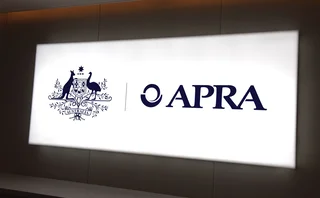
The risk of three markets
The Brazilian Mercantile and Futures Exchange’s (BM&F) approach to derivatives risk is conservative, but doesn’t lack innovation. Its three clearing houses and involvement in the over-the-counter and retail derivatives markets mean it couldn’t be any other way.

As Risk was going to press, the Brazilian Mercantile and Futures Exchange (Bolsa de Mercadorias & Futuros, or BM&F) was preparing for its push into the retail derivatives market. Small futures contracts – one-tenth the size of standard futures – on live cattle and the Bovespa stock market index will be offered initially. For the latter equity contract, for example, each point change in value is worth R$0.30. “We wanted to keep the contracts simple and intuitive,” says Cícero Augusto Vieira Neto, derivatives clearing house director at the BM&F.
The mini derivatives will be traded via a new system called WebTrading. Clients will place bids and offers via registered brokerage houses’ websites. “We expect demand to come from both individuals and companies in Brazil,” Neto adds. With an annualised volatility of around 40%, the index future should appeal to day traders in particular.
Market participants designated by the BM&F as having arbitrageur status will have their cost of trading reduced. Also, arbitrageurs – who will trade in both the standard and smaller contract markets – will have risk offsets reflected in the BM&F’s margin calculations. Neto says this preferential treatment is aimed at attracting liquidity providers into the mini-futures market. Just over a month ago, the expansion of online futures trading was one of the focal points for a delegation from the Brazilian Central Bank, who made a derivatives fact-finding mission to the exchange.
According to figures from the Futures Industry Association (FIA), the BM&F’s trading volume for the first half of 2004 – 96.1 million contracts – makes it the eleventh largest global derivatives exchange. More impressive is its growth rate: compared with the same period in 2003, its volumes surged 83% – easily trumping its larger counterparts abroad. May 2004 was a record month, with around 17.5 million contracts traded.
Around half the derivatives trading activity at the BM&F is in interest rate instruments. The exchange has also been deeply involved in the over-the-counter market for around a decade: there is a registration service for swaps and exotic options transactions that allows traders to post collateral with the clearing house, which then becomes the central counterparty to the trade – guaranteeing settlement.
The risk management structure for the BM&F’s three clearing houses – derivatives, foreign exchange and securities – is segregated. There is an internal risk committee that oversees the houses and makes strategic decisions. There is also an advisory committee for risk analysis composed of risk managers and treasurers from around 20 financial institutions. “Currently there is no cross-margining – that is, no compensation effects for risk offsets between [positions] on different clearing houses,” Neto says. He says this might change in the future, but there are no imminent plans.
The internal risk committee typically meets weekly and defines stress parameters that are used for the margin calculations at each clearing house. For derivatives margins, a stress-testing portfolio risk model is used. However, given that three-quarters of trading is open outcry, a true real-time risk system is not possible. Instead, risk is recalculated every 20 minutes, and encompasses new trades. “We monitor intra-day risk very carefully, and can call for additional collateral as required,” Neto says.
The risk system decomposes each derivatives position into its constituent risk factors, and the risk committee defines stress scenarios for each factor individually. The worst possible scenario for each risk factor individually is found, then the worst individual scenarios are combined to find the worst overall scenario. Some implausible combinations are discarded. Though an extreme value theory model is used, macroeconomic analysis of internal and external markets is also considered when defining the scenarios used; the committee can include subjective factors if it wants.
Of course, many derivatives traded at the BM&F have common risk factors. So before a scenario is applied to each risk factor, offsetting exposures are netted across risk factors. All stress scenarios are published on the internet and in a daily bulletin. “This is no black box,” says Neto. Common stress parameters (and some recent typical values) are: the US dollar-real exchange rate (±8% per day – around 16 times the historical standard deviation); and the Bovespa equity index (+10%, –12%). For options, the derivatives clearing house uses a full valuation approach and applies shocks to the underlying’s price and volatility smile surface, in combination.
But despite this sophistication, the Brazilian exchange is yet to adopt a full-scale cross-margining approach that truly reflects risk offsets between different products – why? “We have a very big preoccupation with liquidity here,” says Neto. “Our experience during times of crisis has taught us that allowing risk offsets can be very dangerous,” he adds.
At times of market stress, it’s possible that liquidity constraints could prevent cashflows associated with risk offsets being realised. “We are conservative. Alongside day-to-day risks, we want the clearing house to be able to handle event risk,” Neto says. “In this way we can act as a buffer against systemic risk in the Brazilian economy,” he adds.
Only users who have a paid subscription or are part of a corporate subscription are able to print or copy content.
To access these options, along with all other subscription benefits, please contact info@risk.net or view our subscription options here: http://subscriptions.risk.net/subscribe
You are currently unable to print this content. Please contact info@risk.net to find out more.
You are currently unable to copy this content. Please contact info@risk.net to find out more.
Copyright Infopro Digital Limited. All rights reserved.
As outlined in our terms and conditions, https://www.infopro-digital.com/terms-and-conditions/subscriptions/ (point 2.4), printing is limited to a single copy.
If you would like to purchase additional rights please email info@risk.net
Copyright Infopro Digital Limited. All rights reserved.
You may share this content using our article tools. As outlined in our terms and conditions, https://www.infopro-digital.com/terms-and-conditions/subscriptions/ (clause 2.4), an Authorised User may only make one copy of the materials for their own personal use. You must also comply with the restrictions in clause 2.5.
If you would like to purchase additional rights please email info@risk.net
More on Regulation
Stuck in the middle with EU: dealers clash over FRTB timing
Largest banks want Commission to delay implementation, but it’s not the legislator’s only option
Treasury clearing timeline ‘too aggressive’ says BofA rates head
Sifma gears up for extension talks with incoming SEC and Treasury officials
Rostin Behnam’s unfinished business
Next CFTC chair must finish the work Behnam started on crypto regulation and conflicts of interest
European Commission in ‘listening mode’ on potential FRTB changes
Delay or relief measures on the table after UK postpones start of Basel III to 2027
Australian FRTB projects slow down amid scheduling uncertainty
Market risk experts think Apra might soften NMRF regime to spur internal model adoption
EBA to address double-counting caused by new capital floor
Existing EU capital add-ons for model risk would duplicate new Basel floor on internal models
The Emir error reports that cost banks millions
Dealers lambast onerous EU requirement to notify clients of all errors and omissions
Basel stops short on wrong-way risk
New guidelines a step in right direction, but experts warn they won’t prevent another Archegos







